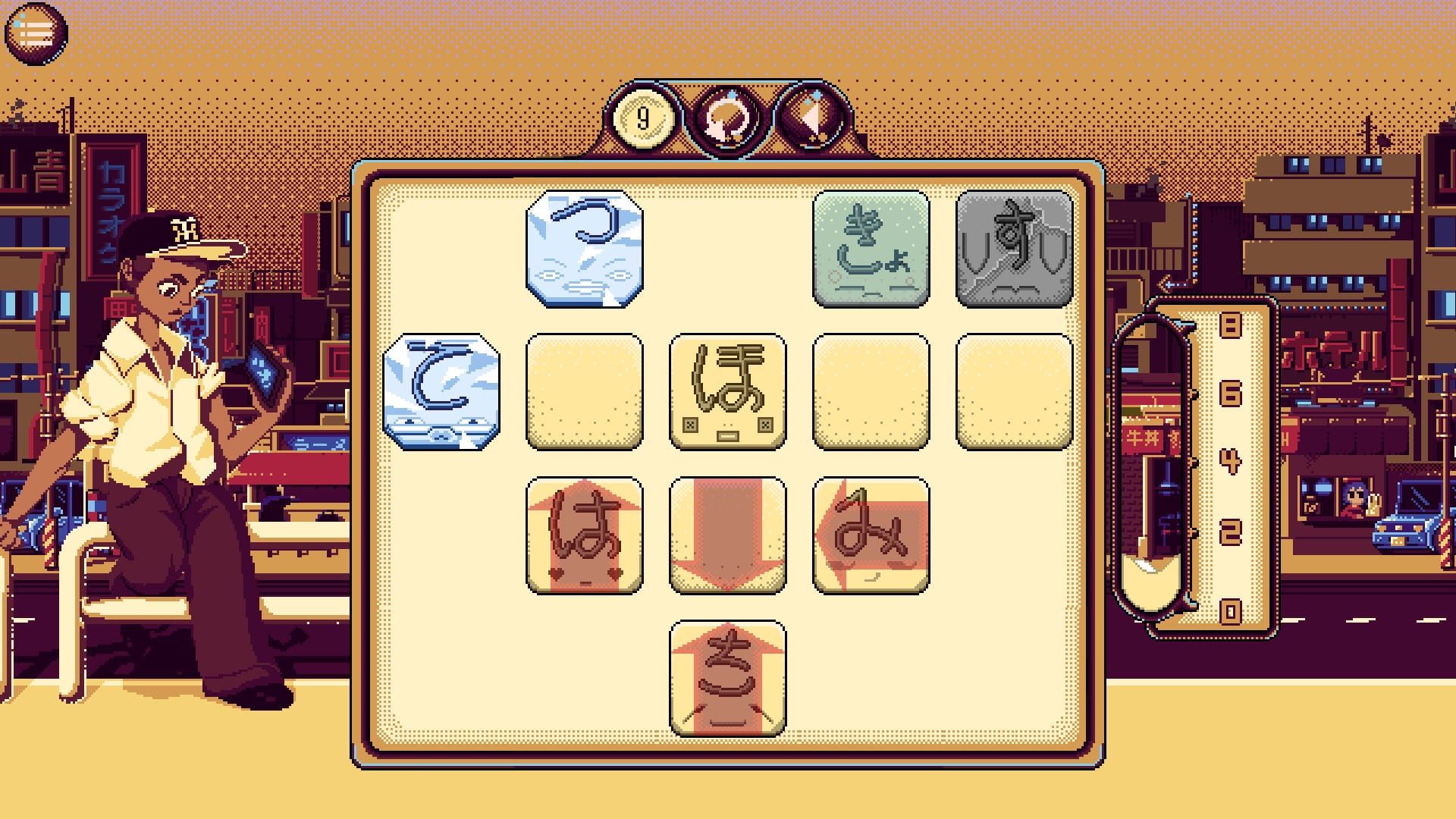Kana Quest has answered a question I didn’t even know I had, with a new way to embrace more of the Japanese culture and learn the language. Developed and published by Not Dead Design, this is a fun and uniquely animated way to learn how to read Hiragana and Katakana, giving you the foundation to help with learning the Japanese language. If you ever wanted to learn Japanese, or you’re a fan of puzzle games, Kana Quest is the game for you. Unlike other educational games, Kana Quest prides itself in having no pop quizzes, so you can enjoy yourself and evolve your learning over time rather than it feeling like a chore. With the Kana Quest tutorial, the game’s mechanics are very simple to comprehend, and would be perfect on other platforms such as the Switch, but is currently only available on PC via Steam.
Whether you’re a beginner, or even if you’re familiar with Hiragana and Katakana, Kana Quest can still be enjoyed as a puzzle game, with an easy and helpful tutorial that focuses on teaching you the basics of Japanese language by using letters and sounds in a fun puzzle game. With simple game mechanics that work by swiping tiles into the correct order, just like playing a game of dominoes, along with the help of the completion gauge, you can visualise how close you are to completing each puzzle.

After successfully completing a level you are scored on your proficiency. The less moves needed, the better your score. Gold, Silver or Bronze will be awarded as you demonstrate your understanding and progress through the game.
Aside from the puzzles and obvious educational aspects, Kana Quest features music that is soothing and compliments the overall feel without being too much of a distraction. Artistically, Kana Quest makes use of very minimalist pixel art. While most of it is animated, it is done in a way that doesn’t distract you from the task at hand, the clam aesthetics working in a way as to not over-stimulate and take away from your experience.
Overall, Kana Quest is presented in a way that is more helpful and feels less like a lesson. At the end of the day, you can still enjoy the game as a puzzle game, but with the advantage being that you can learn some Japanese as you play. I appreciate this type of system because for some people, it is easier to take in information when you don’t feel like you’re sitting in a classroom. On that note, I feel this would be a great program to assist schools with teaching Japanese to students, as I thoroughly enjoyed the subtle animations and managed to learn something that I would hope to be able to one day use.

The Good
- Education without forcing you
- Visually fantastic with the Pixel art
- Japanese culture
- Great for beginners or anyone what is familiar with Hiragana and Katakana
The Bad
- A simple game that should be available on more platforms








